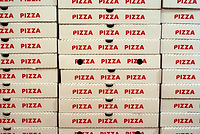Tea Trouble: How Formulations Meet Packaging Needs, Not Consumers’

As reformed soda drinkers continue to look for healthier ways to get their caffeine fix, the world’s ready-to-drink (RTD) coffee and tea market is set to grow from $69 billion in 2011 to $125 billion in 2017––just under 11 percent annual growth according to an analysis by research firm MarketsandMarkets.[1] As a result, tea will become the second most consumed beverage in the world after water, and for good reasons. It is well established that tea is loaded with antioxidants and compounds that can boost endurance, help protect against cancers and heart disease, increase exercise stamina and more, notes Time magazine.[2]
With its general halo of health and the allure of abundant beneficial antioxidants, RTD tea is particularly well-positioned for continued growth in North America among consumers looking for better-for-you beverage choices, according to projections by market research firm IRI.[3] This may be particularly true in Canada, where Canadians drink almost 9.7 billion cups of tea every year. A report commissioned by Agriculture and Agri-Food Canada valued the entire industry at C$423.8 million in 2012 and predicted that Canadian tea consumption would increase 40 percent by 2020—a trend that is likely to carry over to the RTD tea market.[4]
Canadian demographics may also favor this shift with a large number of immigrants arriving from Southeast Asia, India and China—cultures known for their devotion to tea.[5] In fact, since 2003, immigrants from Asia and the Pacific region have accounted for well over 50 percent of new permanent residents in Canada.[6]
Yet despite recent growth––and tremendous potential for further growth, particularly at the premium end––most of the tea packaged in the U.S. and Canada is quite different from the simple “tea leaves plus hot water” recipe brewed at home or commonly found at tea shops. While tea is naturally a low-acid beverage, most of it is produced in high-acid plants that also make soft drinks and juices.
Given that reality, supporting tea production at these sites requires manufacturers to make significant modifications to the simple “tea leaves plus hot water” recipe because tea’s acidity ranges from neutral to strongly alkaline, while sodas and juices are the opposite. So manufacturers must first alter the pH of the naturally alkaline tea, which most do by adding ascorbic acid and sugar or artificial sweeteners to alleviate its bitter taste. This explains why packaged tea formulations taste different than their freshly brewed counterparts and contain ascorbic acid and sweeteners.
Still, tea is an ideal drink in multicultural societies thanks to its versatility. While all tea is equal in the sense that every type—from black, white and green to the more exotic varieties—is created by steeping leaves from the plant Camellia sinensis in hot water, companies are creating and marketing innovative new varieties that range well beyond green, white and black. Most incorporate herbs, flowers, fruits and roots for unique flavors, and some even feature nutraceutical ingredients that offer health benefits.
With such creativity and selection at play in the tea market, it’s not surprising that IRI projects growth in the premium and super-premium RTD markets in Canada and the U.S. in coming years, even though hot tea has reigned supreme in Canada to date thanks to its British roots. In fact, the rise of boutique teashops and niche retailers, such as David’s Tea and Steeped Teas, which have both rapidly established themselves on the Canadian scene and even expanded south into the U.S, may spur specialty retailers to get in on the action with RTD lines.[7]
A case in point comes with beverage giant Starbucks, which is also looking to capitalize and expand within the tea sector.[8] In 2012, it added the loose-leaf tea retailer Teavana to its growing tea empire, which included over 59 locations in Canada at the time.[9]
While major brands such as Nestea and Lipton still account for the majority of the RTD consumption in Canada, given the trends, RTD is a logical next step for more specialty purveyors.[10] Yet the consumers who gravitate to high-end tea products want to taste the subtle differences between varietals, which makes the acid-plus-sugar formulation in RTD versions problematic. Tea aficionados also tend to be more health-conscious and pay greater attention to sugar and other additives on the label. As a result, manufacturers should consider employing a different approach for processing these products—or risk alienating these discerning consumers.
We know that keeping tea ingredient lists short and simple to showcase the purity of the drink is one way to appeal to the high-end RTD market. Here are some other ways to appeal to, and capture, this segment:
Adopt Aseptic Processing and Cartons
The flash and gentle heat treatment provided with aseptic processing, which is equally effective with high- and low-acid products, helps preserve the original brewed tea quality and renders it shelf-stable for up to a year without the need for preservatives. Aseptic cartons keep oxygen and light away from brewed tea, preserving more of its healthful properties. Paper-based cartons have the added benefit of being lightweight and conveying a more sustainable and environmentally friendly profile that appeals to health-conscious consumers looking for natural beverages.
Tell a Sustainable Story
Four in ten Canadians assert that environmental concerns play a role in their purchasing decisions, and they would be willing to pay more for a product or service which they considered environmentally friendly.[11] The same research also hints that consumers would be willing to pay extra for more eco-friendly packaging. This makes it important for companies to educate consumers about the sustainability of their products and packaging through labeling and/or their marketing efforts.
Sell a Cultural Experience
Perceived health benefits are one big reason consumers are looking for cleaner-label premium teas, but companies shouldn’t overlook the opportunity to tap into the desire––particularly of millennial shoppers––to feel worldly and cultured. These tea drinkers know their oolong from their Darjeeling, and packaging and marketing should be short on ingredients and long on history and culture to connect with this aspiration.
Consider Value-Added Tea Products
Kombucha and the less well-known Jun are two fermented tea products that hold health allure even beyond regular tea. What’s more, non-tea steeped drinks such as rooibos, ginseng and elderflower are growing sales in the tea space. In addition, fruit-tea hybrids are burgeoning, far beyond the standard lemonade-black tea blends, though companies should innovate while minimizing added sugars to stay on trend.
Tea manufacturers and beverage makers looking to move into tea should carefully survey the shifting landscape and take it into account. Increasingly, North American consumers are reading product labels and looking for products that are healthful, natural and as pure and simple as tea leaves steeped in water.
Suley Muratoglu is the vice president of marketing and product management for Tetra Pak Inc., U.S. & Canada. Visit DoingWhatsGood.us for more information.
References
2. http://healthland.time.com/2012/09/04/13-reasons-to-love-tea/.
5. http://www.euromonitor.com/tea-in-canada/report.
6. http://www.cic.gc.ca/EnGLish/resources/statistics/facts2012/permanent/08.asp.
10. http://www.bdc.ca/Resources%20Manager/study_2013/consumer_trends_BDC_report.pdf.
11. http://www.bdc.ca/Resources%20Manager/study_2013/consumer_trends_BDC_report.pdf.
Looking for a reprint of this article?
From high-res PDFs to custom plaques, order your copy today!




